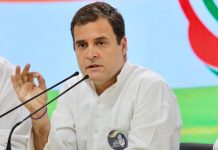
There are many worse ways to do research for a book. Simon Singh, a lifelong TV addict who “watches everything and anything on television, except for dramas”, would spend all day parked firmly on his couch binge-watching episodes of The Simpsons, freeze framing every time he saw a number appear on screen, hoping to catch some obscure mathematical joke made by the show’s writers, a disproportionate number of whom have university degrees in math or physics (all of this, much to the chagrin of his journalist wife Anita Anand, who would spend her days in the British Library, researching the life of Sophia Duleep Singh, the suffragette granddaughter of Maharaja Ranjit Singh she is writing a book about).

Secrets Simon Singh Bloomsbury 253 pp; Rs 399
The result of all that effort is The Simpsons and Their Mathematical Secrets, a book that uses those mathematical references as starting points to tell stories about the maths involved. The math jokes are aplenty, both in the book (which has a series of exam-paper style set of jokes with the number of points you get if you either laugh or cringe at them) as well as the series. Some of them are highly obscure gags that require both a keen interest in mathematics as well as a keen eye for one to even notice, let alone understand. Others are lazy, often cringeworthy maths puns. In the episode ‘Simple Simpson’ (2004), for instance, Homer disguises himself as a superhero called Simple Simon, Your Friendly Neighbourhood Pie Man, punishing evildoers by flinging pies in their faces. At one point, a bystander remarks, “We all know ‘πr2’, but today ‘pie are justice’.” It’s a non sequitur, one that writer Al Jean, a Harvard math graduate who introduced the joke into the script, dismisses as an old chestnut probably created by someone from 1820s, but Singh uses it to talk about the meaning of π, of Archimedes’ and latter methods used to estimate its value, an anecdote about a US state legislature’s attempts to legislate the value of π. It’s classic learning by distraction, exploiting man’s love for the yellow denizens of Springfield to teach him some maths.
It is a skill Singh specialises in, making mathematics and science accessible for the lay reader. He has in the past written bestsellers about the Big Bang, cryptography and Fermat’s Last Theorem — rarely the stuff bestsellers are made of — breaking down complex scientific theory into digestible chunks and garnishing them with some of the many riveting stories in the history of science. “It’s really important to explain the math and science. My books have a lot of history in them, a lot of biography, many odd and weird things. But they must explain some science. The reason for writing books like this is that they reach three audiences. One is the core audience of people like me; I write books I want to read. So the geeks and nerds who are like me will read my books because they have that same interest that I do. That’s great, but then there are also two ends of the other spectrum. There are people who’re probably a bit older, who were scared of science, but also curious. It’s great when people say to me, ‘Oh, I always hated mathematics, but I read your book on Fermat’s Last Theorem and now I understand why it’s beautiful.’ Or, there are the younger people, who are thinking about what they’re going to do with their lives. Teachers have a lot of hard things they have to teach, like calculus or Newton’s Laws of Cooling. Some of it is not so interesting, and I have great admiration for teachers. But if my books can come in and say, ‘Once you do this calculus, there are these incredible things you can do later on,’ then that’s maybe the most important thing.”
Singh believes that both his background as a teacher (he has a PhD in particle physics) and as a television presenter (before writing Fermat’s Last Theorem in 1997, he worked in the BBC’s Science and Features Department) contributed in allowing him to understand “how other people struggle with ideas that you might not find so complicated, how to engage and interest them”. A transition from a PhD at Cambridge and CERN, Geneva, to a career in television isn’t the most obvious one. “In my final year,” he says, “I could see other people who were just sailing through their PhDs. If I was trying to understand something, they would understand it before me. If I was trying to find a solution to a problem, they would get there before me. So I thought, ‘Those are the people meant to be scientists’. I thought if I leave being a scientist, I should stay within science. And I thought that the best thing would be to become a science journalist.”
For many of the writers of The Simpsons, this transition from Ivy League math degrees to comedy writing wasn’t the result of a similar inferiority complex, but a decision to follow their dreams. At least four of them had worked for Harvard Lampoon while in college. Singh sees a connection between math and comedy. “Why a mathematician is funny…” he begins, before saying that most people think it impossible because “most people are outside that world”. “There’s no easy answer,” he says, “but I couldn’t ignore it. I let the writers put forward their own theories. David X Cohen emphasised the intuition side of it, that mathematicians have a very good intuition over whether a problem can be solved and what that solution is. Bad mathematicians pick impossible problems, and even if they pick soluble problems, they do not know how to solve them. It’s the same with comedy. If you’re a comedian, you’ve got to know whether this scenario is funny, and if it is, how do you find the joke? Other people said that it’s also the determination and the stamina, because again with a mathematical problem, you might have to work for hours, days, weeks banging your head against a wall trying to solve it. Similarly, if you’re doing a 20-minute The Simpsons episode, it’s a technically difficult story to tell and you need that stamina to really turn a story idea into a beautifully crafted episode. So people have lots of different ideas, but the one common theme that seemed to emerge was this idea of logic. Mathematicians love logic. They love playing with logic; they love bending logic; they love stretching it; sometimes, they even break it. When you break logic, you get the illogical. That’s where the humour is.”
ajachi@tehelka.com












